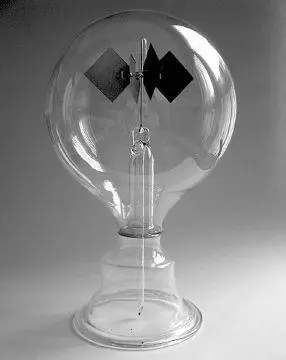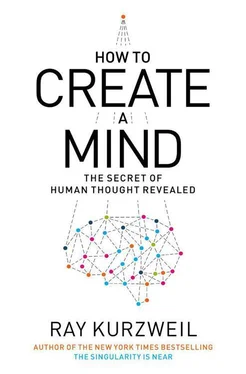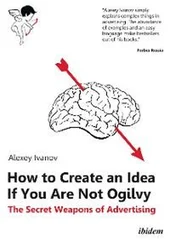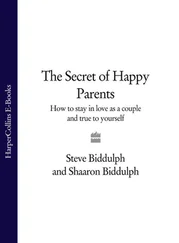How can this be? The answer— obviously —is that distances contract parallel to the motion (but not perpendicular to it). So the two Einstein brothers are getting shorter (assuming they are flying headfirst) as they get faster. This bizarre conclusion probably lost Einstein more early fans than the difference in the passage of time.
During the same year, Einstein considered the relationship of matter and energy with yet another mind experiment. Scottish physicist James Clerk Maxwell had shown in the 1850s that particles of light called photons had no mass but nonetheless carried momentum. As a child I had a device called a Crookes radiometer, 8 which consisted of an airtight glass bulb that contained a partial vacuum and a set of four vanes that rotated on a spindle. The vanes were white on one side and black on the other. The white side of each vane reflected light, and the black side absorbed light. (That’s why it is cooler to wear a white T-shirt on a hot day than a black one.) When a light was shined on the device, the vanes rotated, with the dark sides moving away from the light. This is a direct demonstration that photons carry enough momentum to actually cause the vanes of the radiometer to move. 9
The issue that Einstein struggled with is that momentum is a function of mass: Momentum is equal to mass times velocity. Thus a locomotive traveling at 30 miles per hour has a lot more momentum than, say, an insect traveling at the same speed. How, then, could there be positive momentum for a particle with zero mass?
Einstein’s mind experiment consisted of a box floating in space. A photon is emitted inside the box from the left toward the right side. The total momentum of the system needs to be conserved, so the box would have to recoil to the left when the photon was emitted. After a certain amount of time, the photon collides with the right side of the box, transferring its momentum back to the box. The total momentum of the system is again conserved, so the box now stops moving.

A Crookes radiometer—the vane with four wings rotates when light shines on it.
So far so good. But consider the perspective from the vantage point of Mr. Einstein, who is watching the box from the outside. He does not see any outside influence on the box: No particles—with or without mass—hit it, and nothing leaves it. Yet Mr. Einstein, according to the scenario above, sees the box move temporarily to the left and then stop. According to our analysis, each photon should permanently move the box to the left. Since there have been no external effects on the box or from the box, its center of mass must remain in the same place. Yet the photon inside the box, which moves from left to right, cannot change the center of mass, because it has no mass.
Or does it? Einstein’s conclusion was that since the photon clearly has energy, and has momentum, it must also have a mass equivalent. The energy of the moving photon is entirely equivalent to a moving mass. We can compute what that equivalence is by recognizing that the center of mass of the system must remain stationary during the movement of the photon. Working out the math, Einstein showed that mass and energy are equivalent and are related by a simple constant. However, there was a catch: The constant might be simple, but it turned out to be enormous; it was the speed of light squared (about 1.7 × 10 17meters 2per second 2—that is, 17 followed by 16 zeroes). Hence we get Einstein’s famous E = mc 2. 10 Thus one ounce (28 grams) of mass is equivalent to 600,000 tons of TNT. Einstein’s letter of August 2, 1939, to President Roosevelt informing him of the potential for an atomic bomb based on this formula ushered in the atomic age. 11
You might think that this should have been obvious earlier, given that experimenters had noticed that the mass of radioactive substances decreased as a result of radiation over time. It was assumed, however, that radioactive substances contained a special high-energy fuel of some sort that was burning off. That assumption is not all wrong; it’s just that the fuel that was being “burned off” was simply mass.
There are several reasons why I have opened this book with Darwin’s and Einstein’s mind experiments. First of all, they show the extraordinary power of the human brain. Without any equipment at all other than a pen and paper to draw the stick figures in these simple mind experiments and to write down the fairly simple equations that result from them, Einstein was able to overthrow the understanding of the physical world that dated back two centuries, deeply influence the course of history (including World War II), and usher in the nuclear age.
It is true that Einstein relied on a few experimental findings of the nineteenth century, although these experiments also did not use sophisticated equipment. It is also true that subsequent experimental validation of Einstein’s theories has used advanced technologies, and if these had not been developed we would not have the validation that we possess today that Einstein’s ideas are authentic and significant. However, such factors do not detract from the fact that these famous thought experiments reveal the power of human thinking at its finest.
Einstein is widely regarded as the leading scientist of the twentieth century (and Darwin would be a good contender for that honor in the nineteenth century), yet the mathematics underlying his theories is ultimately not very complicated. The thought experiments themselves were straightforward. We might wonder, then, in what respect could Einstein be considered particularly smart. We’ll discuss later exactly what it was that he was doing with his brain when he came up with his theories, and where that quality resides.
Conversely, this history also demonstrates the limitations of human thinking. Einstein was able to ride his light beam without falling off (albeit he concluded that it was impossible to actually ride a light beam), but how many thousands of other observers and thinkers were completely unable to think through these remarkably uncomplicated exercises? One common failure is the difficulty that most people have in discarding and transcending the ideas and perspectives of their peers. There are other inadequacies as well, which we will discuss in more detail after we have examined how the neocortex works.
A Unified Model of the Neocortex
The most important reason I am sharing what are perhaps the most famous thought experiments in history is as an introduction to using the same approach with respect to the brain. As you will see, we can get remarkably far in figuring out how human intelligence works through some simple mind experiments of our own. Considering the subject matter involved, mind experiments should be a very appropriate approach.
If a young man’s idle thoughts and the use of no equipment other than pen and paper were sufficient to revolutionize our understanding of physics, then we should be able to make reasonable progress with a phenomenon with which we are much more familiar. After all, we experience our thinking every moment of our waking lives—and our dreaming lives as well.
After we construct a model of how thinking works through this process of self-reflection, we’ll examine to what extent we can confirm it through the latest observations of actual brains and the state of the art in re-creating these processes in machines.
CHAPTER 2
THOUGHT EXPERIMENTS ON THINKING
I very rarely think in words at all. A thought comes, and I may try to express it in words afterwards.
Читать дальше













